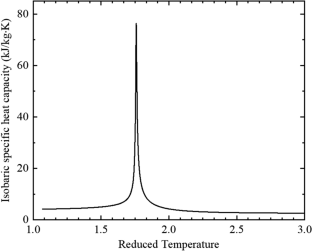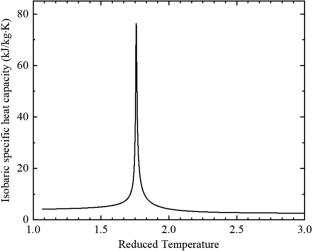Study of the Large Local Specific Heat Capacity Impact on Turbulent Heat Transfer at Supercritical Pressure
Abstract
The specific heat capacity of supercritical fluids (SCFs) exhibits a sharp variation near the pseudo-critical temperature, resulting in the emergence of a localized region characterized by significantly large specific heat capacity within SCF flows. To comprehensively examine the influence of this prominent local specific heat capacity on turbulence and heat transfer in SCF flows, a series of direct numerical simulations are executed under supercritical pressure conditions, with an inlet bulk Reynolds number of \({Re}_{in}= 2700\). Four cases sharing identical geometry yet differing in thermophysical properties are simulated and systematically compared after isolating the specific heat capacity from the other thermophysical factors. The findings reveal that the large local specific heat capacity results in heightened enthalpy fluctuations and fosters the enhancement of turbulent heat transfer. Furthermore, an observed quenching effect attributed to the substantial local specific heat capacity becomes evident within the near-wall region, stemming from fluctuations in thermal diffusivity. Notably, the decomposition of wall heat flux underscores the significant influence of the large local specific heat capacity on the primary turbulent heat flux governing SCF heat convection. The impact exhibits a nuanced complexity, simultaneously manifesting in a simultaneous increase in mean enthalpy gradient and reduction in turbulence.



 求助内容:
求助内容: 应助结果提醒方式:
应助结果提醒方式:


